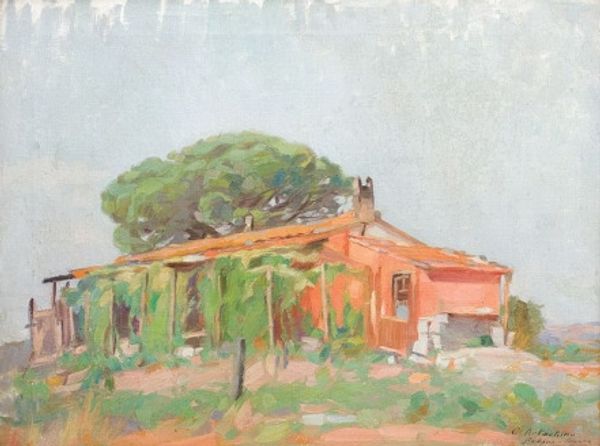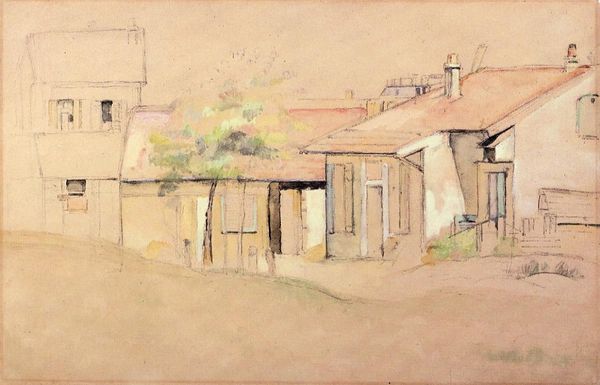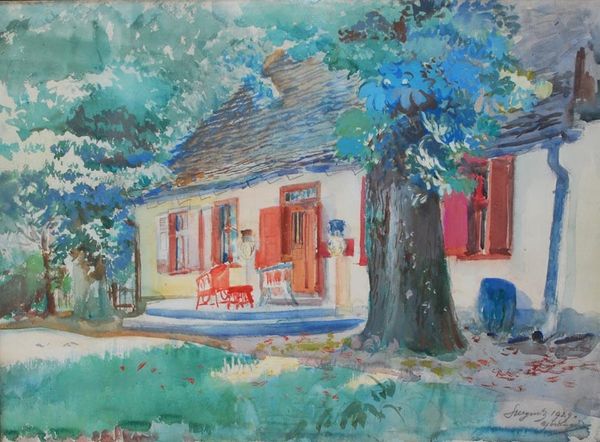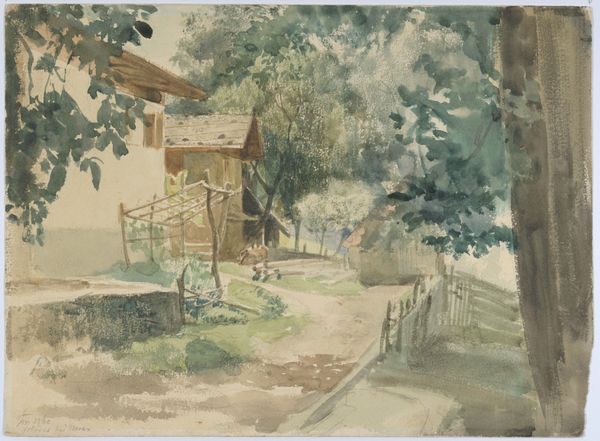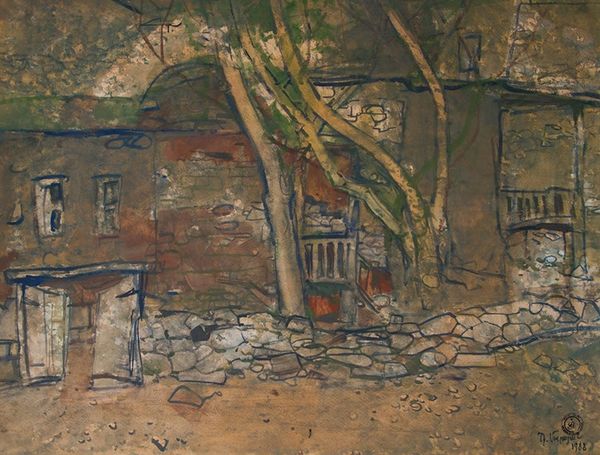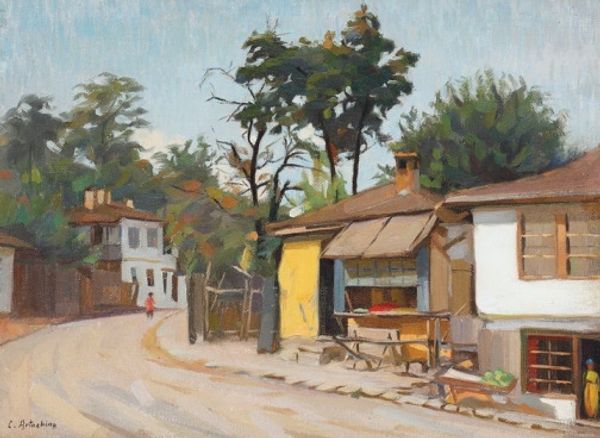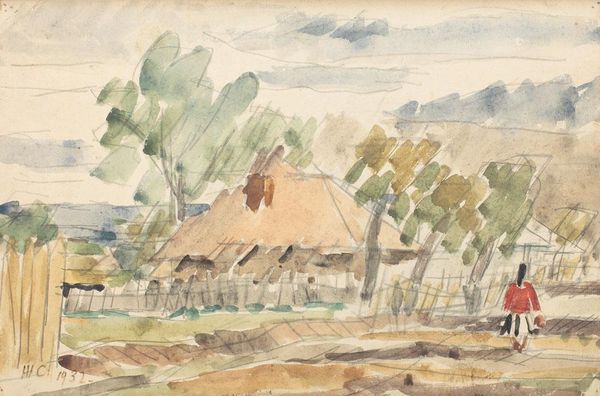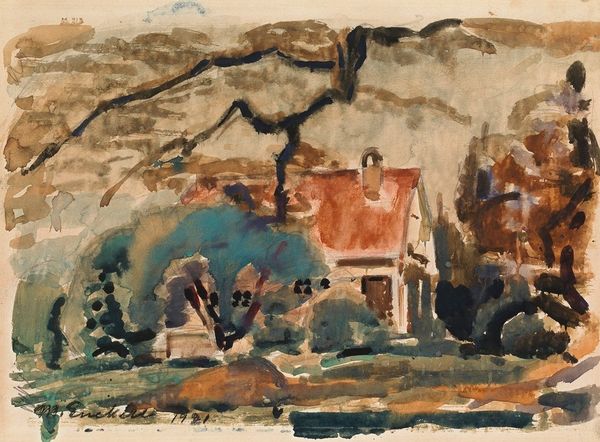
plein-air, watercolor
#
plein-air
#
landscape
#
oil painting
#
watercolor
#
watercolor
#
realism
Copyright: Public domain
Curator: Looking at "House in Fundeni," painted in 1941 by Vasile Popescu, one notices the artist’s employment of watercolor and a plein-air technique. What's your immediate impression, Editor? Editor: My first thought is "sun-drenched melancholy." The colors are bright, almost aggressively cheerful, but something about the slightly off-kilter perspective and bare trees hints at a quiet sadness. It feels like a memory, warm but fading. Curator: I find it interesting how Popescu renders the home almost like a symbol. The white walls against the earthy browns of the roof and surroundings evoke a feeling of purity. There's a primal symbolism, a shelter rendered amidst the wildness of nature. Do you agree? Editor: Absolutely. But there's something intentionally incomplete about it. The washes aren't fully blended; it feels fleeting, almost dreamlike, a ghost house. Maybe Popescu wanted to capture a certain feeling of transience. A home as a symbol is so powerful precisely because it's tied to our deepest emotions of security and identity. And here, that solidity seems fragile, challenged. Curator: Consider how the open windows almost mirror the empty branches of the surrounding trees. Could they signify opportunities or maybe vulnerabilities during a turbulent historical period? It’s 1941, after all. War is raging. Editor: Maybe. Or maybe they're just open windows. Artists can overthink it, and interpreters can over-interpret. Perhaps the open windows represent a simple invitation or transparency – an attempt to keep it as accessible as possible. What really grabs me is the relationship between this relatively clean building set within something more wild. What does civilization cost, in a way? Curator: It is true. Yet, isn't the interplay between those seemingly dichotomous elements - structure and nature - at the very heart of the image's lasting power? The house anchors the scene, while the surrounding trees imbue it with context and the passage of time, no? Editor: In the end, it just proves that art's power lies not just in the answers it provides, but more so in the questions that linger within us. Curator: Agreed, it’s an evocative painting and it raises many pertinent thoughts still relevant to this very day. Thank you.
Comments
No comments
Be the first to comment and join the conversation on the ultimate creative platform.
